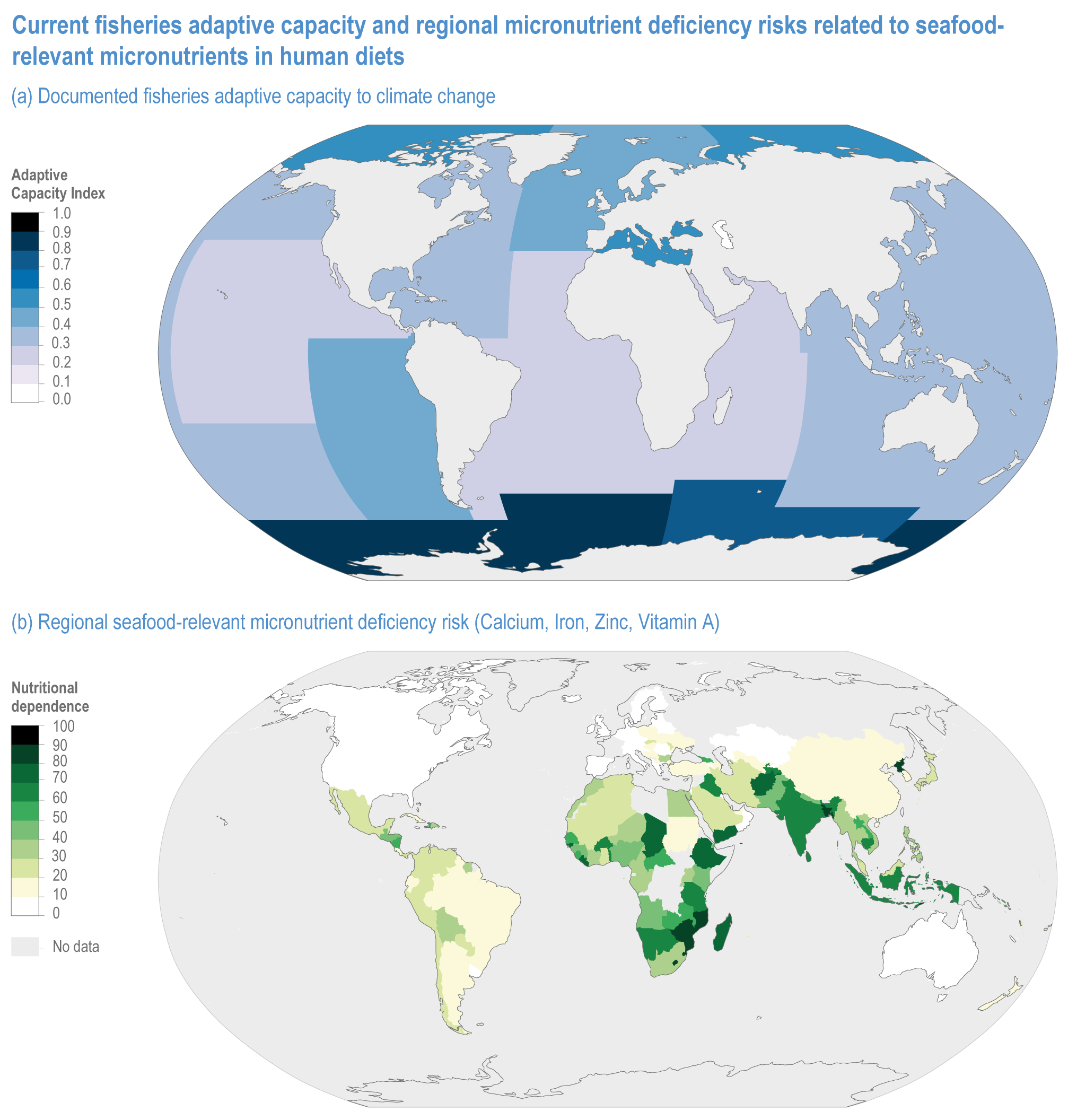Figure Cross-Chapter Box MOVING PLATE.3
Figure caption
Figure Cross-Chapter Box MOVING PLATE.3 | Global documented fisheries adaptive capacity to climate change and regional seafood micronutrient deficiency risk. Ocean areas are delineated into FAO (Food and Agricultural Organization of the United Nations) regions. Fisheries management adaptive capacity is a function of: averaged GDP World Development Indicators for 2018 (World Bank, 2020); climate awareness assessments of 30 of the FAO recognised most recent RFMOs with direct fisheries linkages (see Supplementary Material SM5.5); governance effectiveness index based on six aggregate indicators (voice and accountability, political stability and absence of violence/terrorism, government effectiveness, regulatory quality, rule of law, control of corruption) from 2018 World Governance Indicator (World Bank, 2019) data; and heterogeneity of countries within each FAO zone (highly heterogeneous regions are less likely to establish sustainable and efficient fisheries management for the entire FAO zone). Land area represents the percentage regional averaged seafood micronutrient deficiency risk of calcium, iron, zinc and vitamin A from 2011 data (Beal et al., 2017).
